
Get news, updates, & event Info delivered right to your inbox:
Here's How to Plant a Tree Step by Step
If you're wondering how to help the environment, planting a tree is a great place to start! That's because trees perform many important ecosystem services, including filtering our air and water, absorbing carbon, enriching and stabilizing soil, increasing shade and reducing ambient temperatures, and providing food and habitat for biodiversity. And that's just a few of the many benefits of trees.
"The best time to plant a tree was 20 years ago. The second best time is now."
- Chinese Proverb
Tree planting can be very beneficial, but how you do it matters. Follow along as we walk you through planting a Black Walnut tree, step by step!
Before getting your hands in the dirt, there are a few factors to consider. When, where, and how you plant will influence how well a tree grows, whether it survives, the impact it has now and in the future, and more.
When is the best time to plant a tree?
The best time to plant a tree depends on a few factors, including where you are located and the species of tree you want to plant. In the Northeastern United States, for example, it's best to plant trees in the early spring, before buds open — or in the late fall, when trees have gone dormant but the ground hasn't frozen yet.
It's important to understand your regional climate and plan accordingly. This will give new trees time to grow strong roots before facing winter or summer temperature extremes.
How to choose which tree species to plant
To help you plant a healthy, ecologically appropriate tree in your yard, we worked with certified arborists on our team to develop this handy guide. It's filled with expert tips and resources that will empower you to get your hands in the dirt at home.
How to choose where to plant
When you plant a tree, the goal should always be for it to be able to grow to maturity and live out its life span on your property. With a little planning, you can ensure that the tree will not need to be removed prematurely:
- Space the tree at least 15 feet away from any structures or planned structures so that its roots and branches can grow without harming infrastructure, such as power lines, sidewalks, and underground pipes.
- Research the mature height and canopy width of your chosen species before making these final spacing decisions.
- Dial 811 to notify your utility company that you intend to dig, so they can mark any underground utilities.
- Additionally, consider water access. How will you be watering the tree? Can your hose reach this location?
Here's How To Plant a Tree Step-By-Step
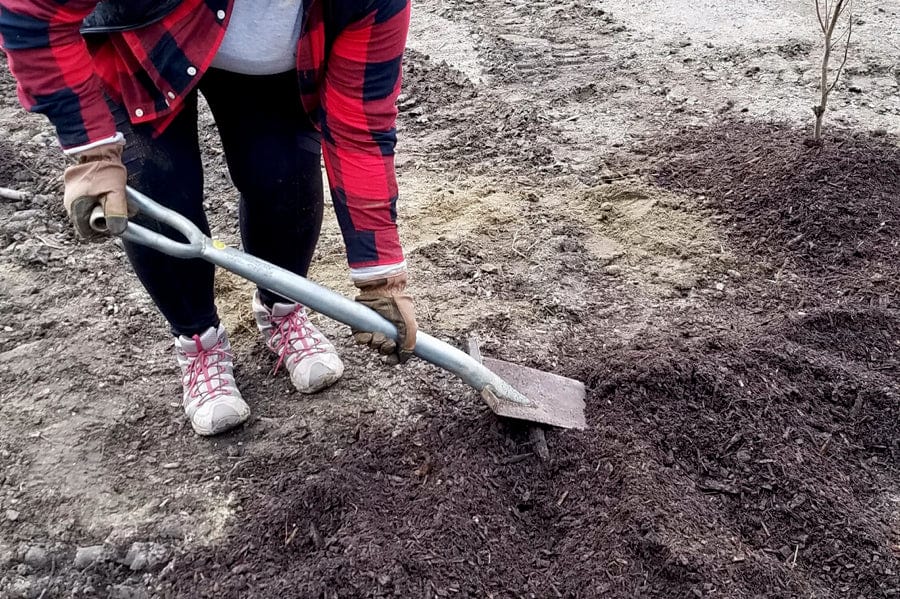
1. Dig a Hole 3 Inches Deeper Than the Length of the Roots
Tip: Choose a place that's shielded from the wind.
If your planting site is exposed to the wind, use nearby objects (like a rock or stick) to create a windbreak. Plant on the north side of the windbreak for shade and wind protection. And remember: the cooler and shadier, the better. So if you’re working on a hillside site, make sure you plant on the north slope. That way, the sapling won't get too much sun.
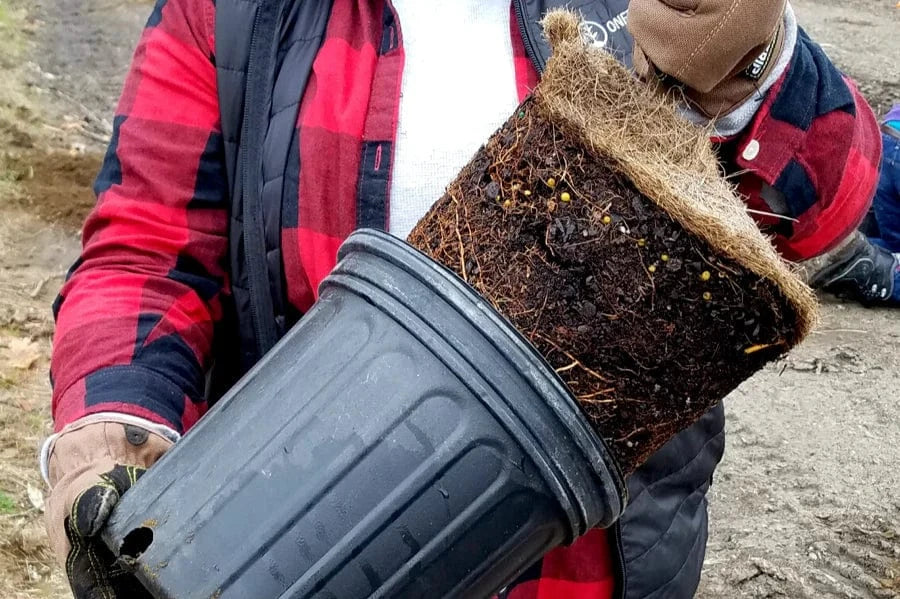
2. Carefully Remove The Seedling From Its Container
Tip: Gently loosen the soil to help the roots spread out.
Make sure your tree isn't root bound. If it is, you may need to cut an X through the bottom of the root ball to break it up. But if it isn’t too bad, simply use your hand to gently break up the pattern. Exercise caution, because if you’re too rough with the roots, the tree could go into transplant shock.
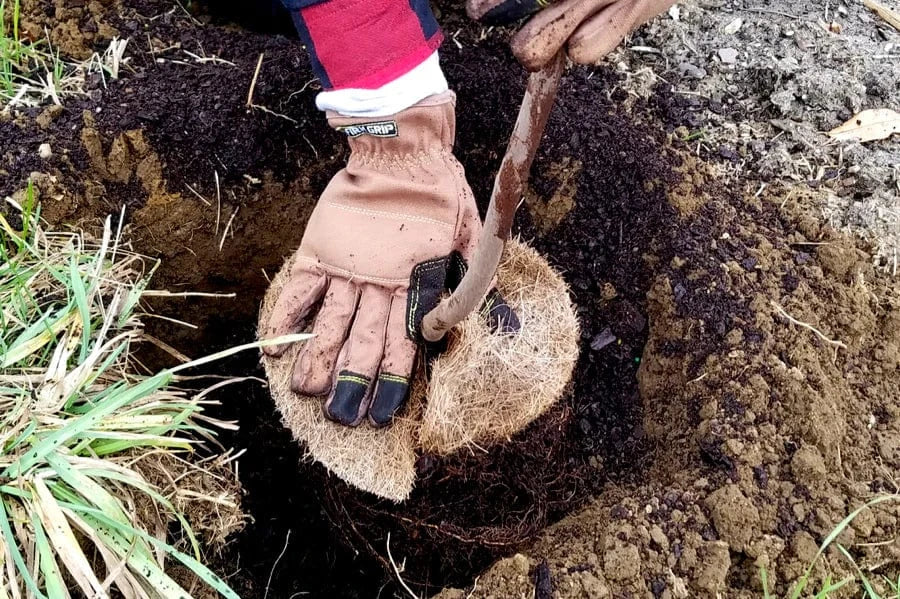
3. Gently Nestle it Into The Hole and Backfill, Compressing As You Go
Tip: Make sure it's centered and upright.
Think of this step as placing the tree in a “bowl” that will be filled with water. Taking a little extra care here will help ensure the roots get enough water to do their job. Once it's placed, backfill with the removed soil and compress in layers until the roots are entirely covered, but the trunk flare (the slightly wider area of the trunk, just above where it connects to the roots) remains partially aboveground.
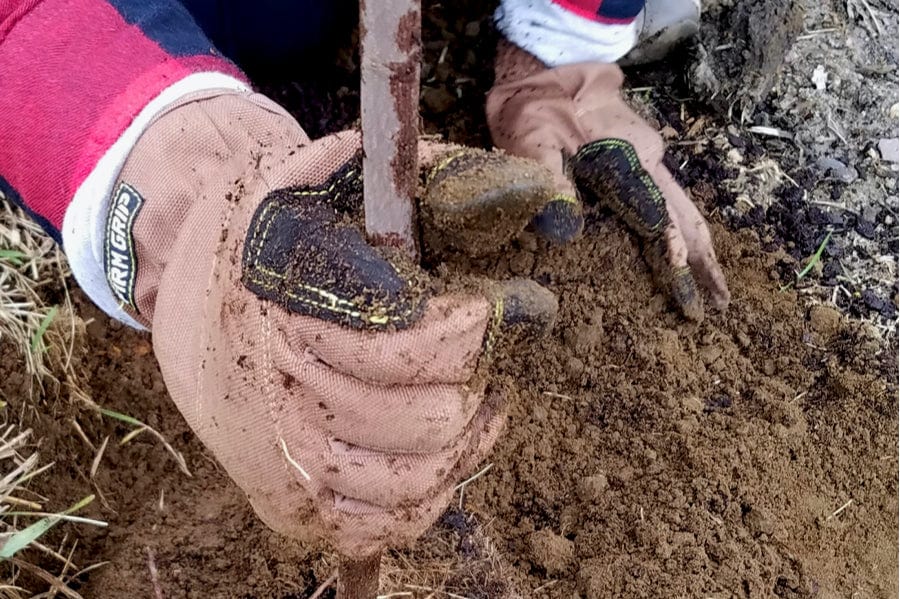
4. Build A Raised Berm to Help Direct Water Flow
Tip: Create a funnel that will allow water to drain toward the tree.
Now is also the best time to do a tug test: lightly tug the tree to check that the soil is sufficiently compacted — if you can pull it right out, it’s not secure enough! And if you’re planting on a north-facing slope, consider fortifying the downhill side with whatever's handy (like rocks and sticks) to help stabilize the newly disturbed soil.
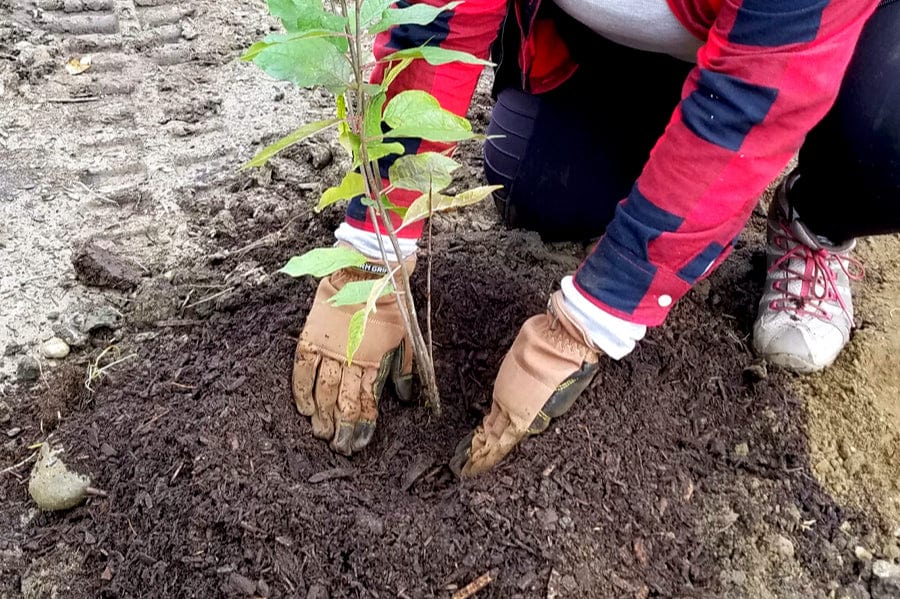
5. Add Mulch to Improve Water Retention and Reduce Competition
Tip: Make a ring of mulch around the tree, but avoid letting it touch the bark.
Be sure to leave a baseball-sized perimeter around the stem, because mulch retains moisture and can lead to rot. When carefully placed, mulch shields the soil from heavy precipitation and sun, which helps prevent water from evaporating off of the soil surface before the tree gets a chance to drink.
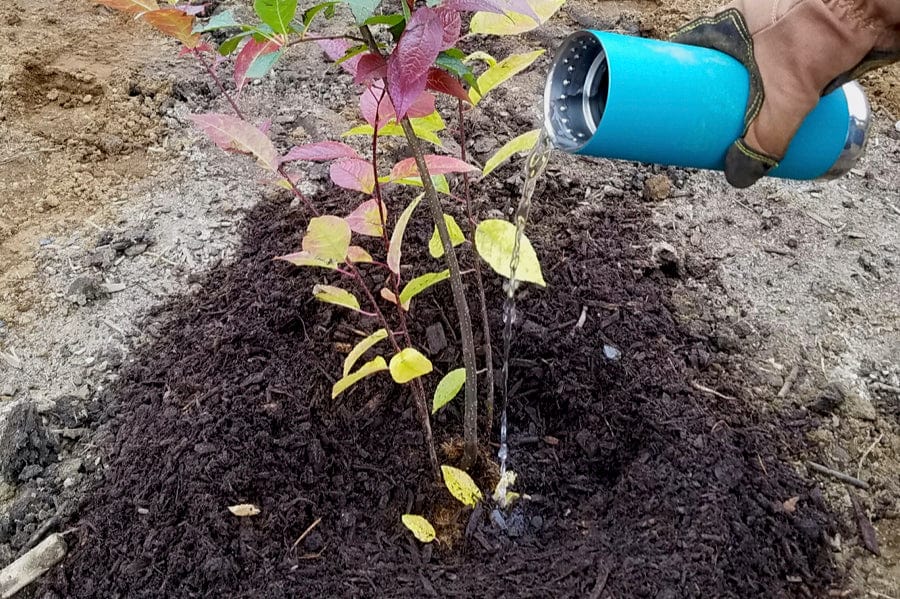
6. Water Your New Tree to Help it Acclimate it to Its New Home
Tip: 1 gallon of water once a week should be sufficient for most seedlings.
Watering will help your new tree respond to the stress of being transplanted, and encourage its roots to grow and spread. If you want to go above and beyond, you could set up a drip irrigation system that will slowly deliver water at regular intervals. This will really give things a boost!
Taking care of your tree:
Now that you've planted a tree, here are a few final tips to ensure it thrives in its new home:
Don’t amend the soil unless absolutely necessary: In some cases, it is, but researchers have found that adding too much compost to the soil can prevent the roots from spreading. The long-term affects of this include a smaller root system, reduced growth, and a less hardy plant.
If fertilizer is necessary, hold off until the tree has had a chance to establish itself: At this beginning stage, all of the tree’s energy should be concentrated on root development to build a solid foundation for long-term growth and survival. When you’re ready to fertilize, use a slow-release, non-burning organic fertilizer to prevent shock.
Proper follow-up care is just as important as proper planting: Keep a close eye on things, particularly monitoring for any outward signs of distress, and making any necessary adjustments. Water trees at least once a week (unless it rains), and more often during hot or windy weather. But don’t over-water either: the soil should be moist but not water-logged.
So there you have it! With our tree planting tips, you can confidently plant a tree at home — and we highly recommend it. It's a great feeling! Still want to leave the planting to us? That's fine, too!
Get news, updates, & event Info delivered right to your inbox:
Related Posts
Real vs. Fake Christmas Trees: Which is Better For the Environment?
20/11/2025 by Meaghan Weeden
8 Reasons to be Grateful for Trees This Thanksgiving
18/11/2025 by Meaghan Weeden
The Ultimate Guide to Sustainable Holiday Gifting
13/11/2025 by Meaghan Weeden
Popular On One Tree Planted
What Causes Deforestation?
10/07/2025 by Meaghan Weeden
8 Amazing Bamboo Facts
14/01/2025 by Meaghan Weeden
Inspirational Quotes About Trees
09/01/2025 by Meaghan Weeden
Fundraising Disclosures

Be Part of the
Restoration Movement
The Grove is more than just a monthly giving program: it's a vibrant community of individuals who are dedicated to reforestation and environmental restoration on a global scale.
As a member of The Grove, you affirm your commitment to restoring forests, nurturing biodiversity, and fostering positive global change.





